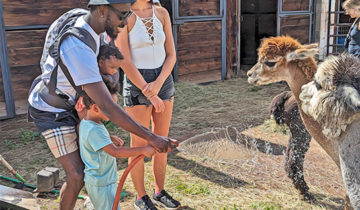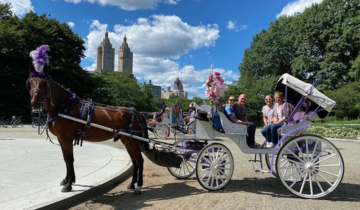High quality Cuba, Argentina and Colombia tourism destinations using VPN for travel: The primary purpose of a VPN is to ensure that nobody can access your private online data and build a profile of you from the sites you visit and the things you do online. The primary purpose of a VPN is to make your private online activity, private. A VPN sets up an encrypted tunnel between you and the internet site you’re using. It encrypts your data and puts it into kind of digital capsule (packet). Before sending that encrypted capsule down the encrypted tunnel to the VPN’s own servers located throughout the world. Once the capsule reaches the VPN’s own servers located throughout the world, the first of two keys is used to unlock the outer layer. The VPN company then knows where to send the rest of the encrypted information. Read extra details at Best VPN for Travel.
Located in the northwest of the country in the province of Salta, Cafayate is a small town of just over 12,000 residents. Although charming and with a few attractions worth visiting – including an archeological museum featuring objects from the local Indigenous people – most people arriving here are on their way to the Quebrada de Cafayate (or Quebrada de las Conchas). An area known for its towering reddish rock formations, the quebrada offers one of the most stunning drives in South America on Route 68. More than 60 kilometers of paved roads cut through colorful sandstone, offering plenty of stops to discover narrow canyons, natural amphitheaters, towers of sandstone and clay, and the shores of the Rio de las Conchas.
It’s the most northerly point in South America, so perhaps it’s only fitting that La Guajira is unlike anywhere else on the continent. This remote and little-visited peninsula is a quiet oasis of sweeping sand dunes, bird-covered mangrove swamps, and vast stretches of empty land where the orange-brown La Guajira Desert meets the turquoise Caribbean Sea. Indigenous beliefs are the law of the land here, as the peninsula is home to the proud Wayuu people, who were never subjugated under Spanish rule and maintain a vibrant culture to this day. Keep in mind that tourism is still new in La Guajira, and the ride in from the regional capital of Riohacha requires both patience and a sense of adventure. The windsurfing Mecca of Cabo de la Vela has the most tourism infrastructure and will likely be your best entry point into the region.
If you’re an art lover, don’t miss Havana’s Museo Nacional de Bellas Artes (National Museum of Fine Arts), with its vast and impressive collection of international and Cuban art. The collection is housed in two buildings, and includes works from ancient times to the present day. Clad in sumptuous Italian marble, the restored Spanish Renaissance-style Palacio del Centro Asturiano was designed in the 1920s by Manuel Bustos. It displays international art, including works by European Masters; ancient art from Greece, Rome, and Egypt; and works from Asia, the United States, and Latin America. The Spanish collection, in particular, is a highlight. The striking marble sculpture, Form, Space and Light, greets visitors at the entrance to the second venue, which dates from 1959. This Rationalist-style Palacio de Bellas Artes building displays a thought-provoking collection focusing on Cuban Art from the 17th century to the present day, including sculptures, prints, and paintings.
Picture the Amazon, and Colombia may not be the first country to come to mind – which is odd, because about a third of the nation is blanketed in its thick (and often impenetrable) jungles. The capital of the vast Amazon Basin is the small frontier town of Leticia, which sits along the banks of the mighty Amazon River, right where Colombia bumps up against Brazil and Peru. Leticia makes a great base for eco-tourism, wildlife safaris, or hikes into the Amazon to learn about the Indigenous tribes that call this area home. The only way to arrive here is by plane from Bogotá, and you can continue onward by boat either downriver to Manaus, Brazil, or upriver to Iquitos, Peru.
This is my first two years as a digital nomad. It’s more of a diary entry and it’s intended to show you, my readers, that there’s a big wide world out there to explore. And that you needn’t be chained to a desk working a traditional 9-5 job. The notion that you can only work in a specific office at certain times of the day is old fashioned. We’re in a digital age and the internet has made the world of work far more flexible. If you want to be a ‘digital nomad’ you just need to think outside the box. And the first step is realising that the things chaining you to your job or city are of your own making. They’re a product of your own choices to date. You can consciously make different choices. Discover additional information on https://inlovelyblue.com/.
The 156,000-acre Tierra del Fuego National Park extends all the way from Beagle Channel to the Chilean Border and northwards to Lago Kami. It’s a paradise for hikers, with trails for all experience levels. Using the town of Ushuaia as a base, adventurers head out onto the park’s hiking trails or along the coastline to explore its dramatic scenery, which includes everything from tall waterfalls, dense forests, and mountains, to beautiful glacier-fed lakes such as Roca and Fagnano. One of the most popular routes is Senda Costera, a coastal path to Lake Roca from Ensenada Bay that offers a chance to see a rich diversity of wildlife including Andean condors. Those who prefer to see the sights in comfort can take a ride on the superb Southern Fuegian Railway, an elegant antique steam train through the park to Cañadon de Toro.
Exploring the town of Trinidad, Cuba, a UNESCO World Heritage Site, is like stepping back in time. The beautifully restored buildings and cobblestone streets in the city center exude a quaint colonial feel. Much of the architecture dates from the 17th to the 19th centuries, when Trinidad prospered from both the sugar and slave trades. Today, Trinidad is one of the best cities in Cuba to visit, apart from Havana. You can soak up its lively ambience in the cobblestone Plaza Mayor, the city’s central square. Above the square stands the neoclassical Church of the Holy Trinity (Iglesia Parroquial de la Santisima Trinidad). Other Trinidad highlights are the Church and Monastery of Saint Francis (Iglesia y Convento de San Francisco), with its distinctive bell tower; the Museum of Colonial Architecture (Museo de Arquitectura Colonial); the art gallery at the Casa de Aldeman Ortiz; and the Palacio Brunet, a grand home built in 1812 and still featuring original frescoes and marble floors. East of Trinidad, on the road to Sancti Spiritus, the lush World Heritage-listed Valle de los Ingenios contains numerous relics and monuments from the 19th century, when the sugar cane plantations and mills flourished. One of the best things to do in Trinidad, Cuba is simply drive or horseback ride through the beautiful scenery of green sugar cane fields, palm trees, and mountains.



